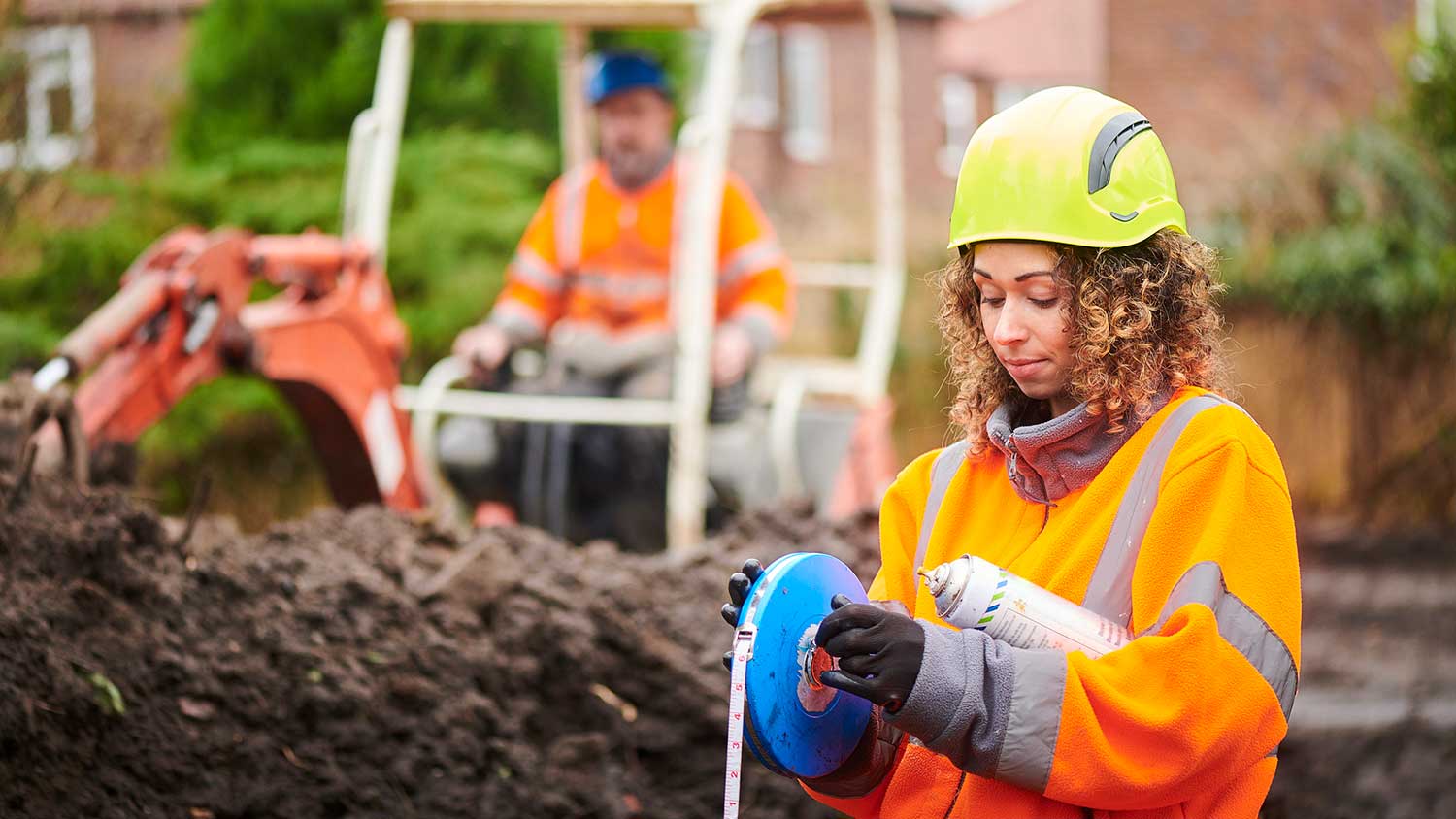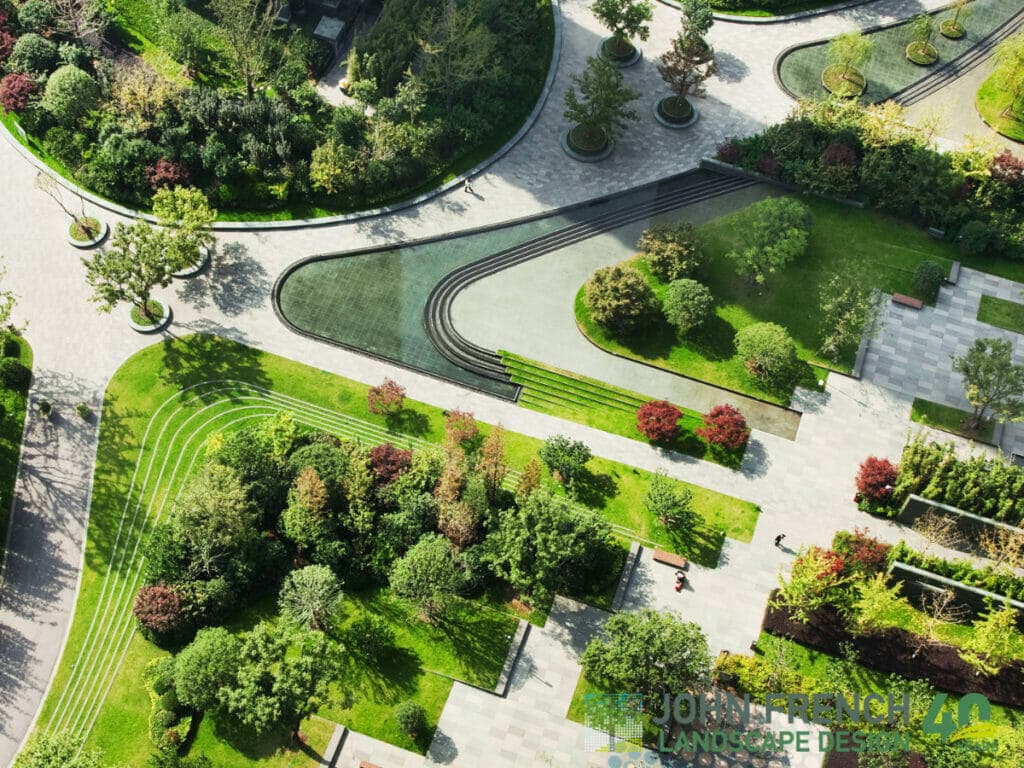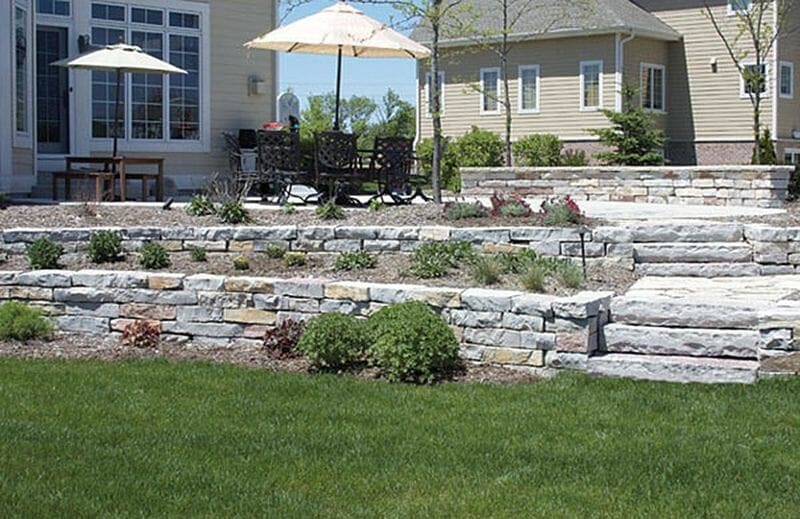Landscape architecture is a profession that involves the design of public spaces, exterior and interior design of parks, gardens, vernacular structures, and other natural areas. Landscape architects are responsible for the siting, design and construction of these areas. Additionally they consult on landscape issues as they relate to urban planning.
Landscape design is also a profession which deals with the design of public spaces, but it is not limited to parks, gardens or vernacular structures. These spaces may include schools, neighborhoods, and corporate campuses. The focus of landscape design is primarily on where the landscape touches people’s lives.
Landscape Architect vs. Landscape Designer: What’s the Difference?
Maybe you have a landscaping, pool, or patio project that’s bigger than you can handle, and you need to contact a professional. Perhaps you or a relative love to work with plants, along with designing and building things so much that one of you wants to pursue an education in landscape architecture or design.
So what is the difference between a landscape architect and a landscape or garden designer? More than you may realize.
Landscape Architects
To legally call yourself a landscape architect, you must have a bachelor’s and/or Master’s degree in landscape architecture from a university and be licensed by the state. Traditionally, the person has attended a college accredited by the American Society of Landscape Architects (ASLA) and passed the required exams to become licensed. A good and reputable landscape architect has experience or has the training to work with challenging issues in both commercial and residential sites, including:
- Steep slopes
- Retaining walls
- Irrigation and drainage systems
- Designing outdoor structures
- Solving elevation problems
- Designing or advising on where to place service lines, entries, driveways, and parking areas
Licensed landscape architects plan and design public outdoor spaces, such as parks, campuses, gardens, cemeteries, commercial centers, resorts, transportation facilities, and waterfront developments. They also design and plan the restoration of natural places disturbed by humans such as wetlands, stream corridors, mined areas, and forested land. Education in and respect for historic landscapes and cultural resources allows landscape architects to work on preservation planning projects for national, state, and local historic outdoor sites and areas.
Landscape architects are employed in private practice and public, non-profit, and private organizations.
:max_bytes(150000):strip_icc():format(webp)/landscape-map-drawing-with-colored-pencils-162897459-5c1bafa946e0fb0001998fa5.jpg)
Landscape and Garden Designers
The primary distinction between landscape architects and landscape designers is that designers usually work on smaller residential projects. While some landscape designers may have training equivalent to a landscape architect―especially if they have an undergraduate-or-higher degree in landscape architecture ―they do not have a state license, which is a requirement.
Some landscape designers are self-taught, but most have taken courses at a college, university, through an extension or certificate program, or online. In other words, most don’t suddenly wake up one day and just decide to call themselves landscape designers.
Most garden designers work with the soft stuff: plants. Some landscape or garden designers may have experience with hardscape, especially in drought-prone regions (like California and Nevada) where pebbles and bark are used as often as succulents and natives. But to do any actual earth-moving construction, wall building, or electrical work, a licensed landscape contractor needs to be brought into the project.
What Is Hardscape?
Hardscape involves the non-living parts of landscaping, such as paved pathways, retaining walls, and patios. Some common hardscape materials include bricks, flagstones, concrete, and metal.
When you consult a landscape designer, you will have a discussion or interview about the project. Usually, the designer will show up at your home, look at the yard, take photos, and ask about preferences in plants, garden maintenance, budget, etc. The designer will then create a plan view drawing and plant list. Depending on how the designer works, he might visit local nurseries with you, make suggestions or help you shop for materials and furnishings, and do actual plant placement. From there, they will make suggestions for another landscaping contractor or professional to do the physical work, which might include excavating an existing garden and hardscape, building patios and decks, and installing plants.
:max_bytes(150000):strip_icc():format(webp)/woman-weeding-a-flower-bed-with-a-hoe-157647881-5c1bb57546e0fb00019ab672.jpg)
An Association for Landscape Designers
The Association of Professional Landscape Designers (APLD), was incorporated in 1989. It encourages members to adhere to a code of professional standards, actively participate in continuing education, and stay current with state-of-the-art developments and trends in the landscape design field. A certification program is offered to members and is based on completed projects that provide professional recognition to designers who can pass a peer review program. Through its website, the APLD offers consumers access to trained designers in their region who are members of the APLD.
Should You Hire a Landscape Architect or Landscape Designer?
You’ve got a vision for your outdoor space, but getting down to the nitty-gritty details can be a little tricky. For most projects, you can choose either a landscape architect or a landscape designer to bring your ideas to life. So, which is the right pro for the job? We compare the benefits of hiring a landscape architect vs. a landscape designer below.
Hiring a Landscape Architect: Pros & Cons
According to HomeAdvisor, landscape architects cost between $70 and $150 per hour. If you aren’t sure what you want, or if your grand plan requires changing the lay of the land, you may need the expertise of a landscape architect. They often work on large or custom landscaping projects, but they can also work on smaller residential projects.
Landscape architects often collaborate with engineers, architects, surveyors, community planners, and other professionals. To legally practice, a landscape architect must hold either a bachelor’s or master’s degree in Landscape Architecture. Certain states may require a license as well.
Pros

Landscape architects have a wide scope of capabilities beyond basic landscape design. They can help plan outdoor structures and irrigation systems, as well as large-scale commercial spaces. If you need more of a landscape overhaul, they’d be the perfect pro for the job.
Cons
A landscape architect typically won’t offer one-on-one artistic direction for garden design. Their knowledge focuses more on the architectural aspect rather than specific plants and aesthetics.
Hiring a Landscape Designer: Pros & Cons
Hiring a landscape designer costs between $50 and $150 per hour. Landscape designers typically have extensive horticultural knowledge and/or nursery experience. They’ll sit down with you to discuss your needs and wants. These pros are well-versed in garden design and can help you avoid costly mistakes, such as planting the wrong types of plants together.
Once they’ve got a solid understanding, a designer will come up with a landscape design plan for your yard. This will give a visual idea of how the finished project will look. From there, they’ll keep working with you until you have a design you truly love.
Pros

A landscape designer offers plenty of one-on-one time to discuss specific plants and which could work the best for your space. They often take a more artistic approach to outdoor projects, helping their clients develop beautiful garden setups.
Cons
Landscape designers can provide in-depth direction for the plants in your landscape. However, many do not include hardscaping plans like patios, walkways, and garden structures.
Landscape Architect vs. Landscape Designer
The biggest difference between a landscape designer and a landscape architect is the nature of the projects they take on. A landscape designer will work closely with you, focusing on the types of plants you want and the overall aesthetic of your desired space.
Landscape architects are the experts since this position calls for formal education. While they may not offer the same one-on-one planning, they can collaborate on more complex structural projects.



